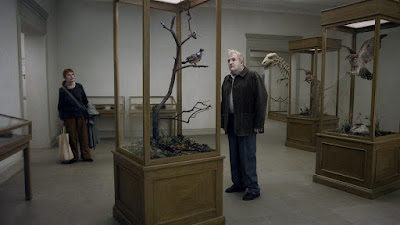 |
| Image courtesy of Universal Pictures. |
Seth Macfarlane uses the story of the foul mouthed teddy bear to make a plea for tolerance, but much like "I Now Pronounce You Chuck and Larry" and other films of that ilk, it does so only after spending nearly two hours making crude jokes at the expense of minorities.
The sequel follows the further travails of Ted (voiced by Macfarlane), a stuffed bear who came to life after his owner (Mark Wahlberg) wished for it to do so as a child. This time, Wahlberg's Johnny is divorced and Ted is married to girlfriend Tami-Lynn (Jessica Barth), with whom he wants to have a baby. However, after Tami-Lynn is found to be infertile, the duo attempts to adopt, but they are told that Ted is "not a person," leading him to all sorts of legal ramifications, including his Social Security number and bank account being revoked and his marriage annulled.
Meanwhile, Donny (Giovanni Ribisi), the villain from the first "Ted," pitches a revenge plan to the head of Hasbro to steal Ted, find out what makes him human and create more teddy bears just like him. Yeah, I know, it's a half baked scenario to include a bad guy in the picture and it happens to be the weakest link in a film already not firing on many cylinders.
And also meanwhile, Johnny develops a romance with the attorney (Amanda Seyfried) representing their case and the picture squeezes in a few other celebrity cameos, including Morgan Freeman, John Slattery and, in one of the film's truly most bizarre moments, Liam Neeson. Actually, that Neeson bit is so peculiar it sort of made me chuckle. Sort of.
Despite all these busy plot mechanics, Macfarlane finds plenty of time to crack jokes about gay people, to whom Ted compares his struggle. Although the filmmakers obviously seem to be supportive of gay rights, it's a shame that the two lead gay characters are such obvious stereotypes and Ted, during one scene, uses the words "fag" and "homo."
The film also appears to have an unhealthy obsession with black male genitalia, which is referenced more times than could be counted on two hands. There's a running joke involving it that never lands as a joke that, coupled with Ted later comparing his case to that of Dred Scott, makes for an uncomfortable pairing. "Ted 2" also features jokes at the expense of Koreans and, um, Tom Brady. Don't ask.
The two court cases in which Ted finds himself entangled are used as calls for tolerance for those who have not been granted equal rights by the U.S. government and the film's titular teddy bear is obviously supposed to be a symbol here. While I believe the filmmakers had their hearts in the right place, the nonstop jokes at the expense of all the people they claim to be sticking up for sort of defeats the purpose.
And, lastly, "Ted 2" is just not that funny. There are some laughs to be had here - a woodland song comes to mind as does the aforementioned Neeson cameo, while a few of Ted's crude jokes also elicit guffaws. But the picture is not as good as the original film, which wasn't perfect either, but certainly a lot funnier than this sequel.







